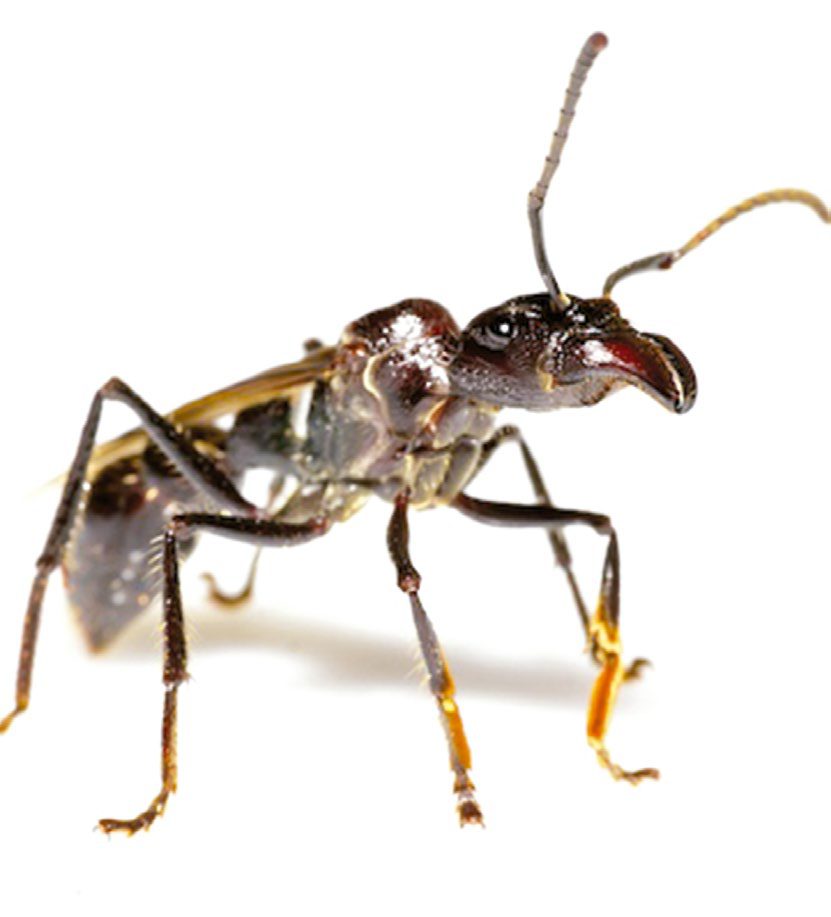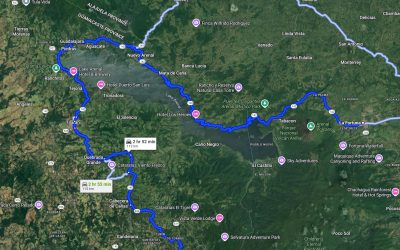The lesser giant hunting ant (Paraponera clavata), more commonly known as the bullet ant, is no stranger to Costa Rica. This insect species inhabits the wet neotropic ecozone, from Honduras in the north through Brazil in the south. It can grow to more than an inch in length and is reddish-black in color.
Bullet ants get their name from the intensely painful sting, which has been compared to getting shot. It causes a throbbing, burning pain that can continue unabated for up to 24 hours.
Colonies usually consist of several hundred individuals. They are normally situated around the bases of trees, where the ants spend most of their time foraging for small arthropods and nectar. They often ascend into the upper canopy of the forest in their quest for food for the colony.
The glasswing butterfly is one of the bullet ant’s prey. In the larval preflight stage, these butterflies protect themselves by producing a chemical that is unpalatable to the ants.
Bullet ant venom generally poses no serious threat to humans, and is currently being studied for properties that may be medically beneficial.






